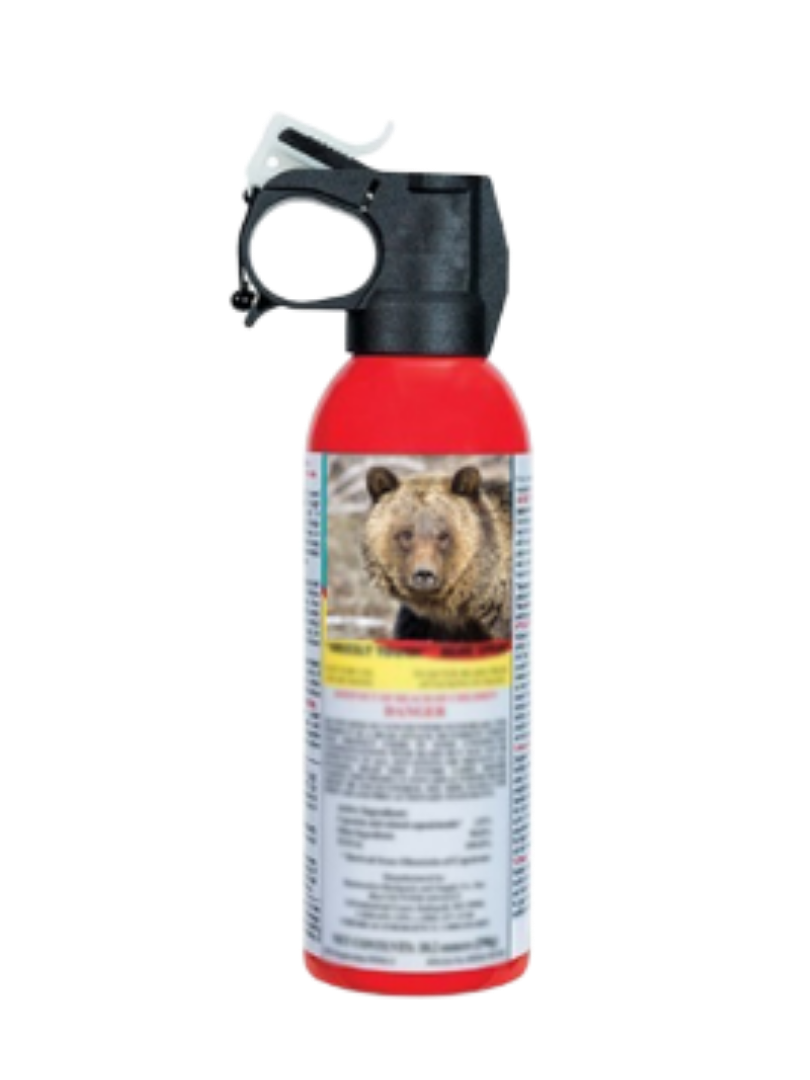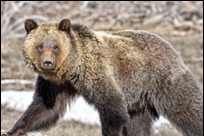By Becky Lewis
When recreating in bear country, your goal should be to avoid bear encounters by being bear aware – hike in groups, make noise, and watch for bear signs. But even when taking precautions, it is still possible to encounter a bear. Carrying bear spray, having it readily accessible, and knowing how to deploy it properly can reduce injuries and save lives.

It is important to remember that personal protection pepper spray is not bear spray; pepper spray is not effective in deterring bears. The active ingredients in bear spray are 1%-2% capsaicin and related capsaicinoids. Bear spray is dispersed in a powerful, expanding cloud, which creates a wide barrier through which the charging bear must pass through. When used properly, it will deter an aggressive bear by causing inflammation in the eyes, throat, and lungs resulting in difficulty in breathing and a temporary loss of the bear’s senses. Bear spray is non-toxic but is very painful for the bear (and humans). The painful effects wear off in 15 to 45 minutes.
When buying bear spray, ensure the can is labeled as “bear spray”, it has an EPA or EPA Est. number, the container is at least 7.9 ounces net weight, has a minimum spray duration of seven seconds, and a minimum spray distance of 25 feet.
Bear spray should be stored above 32oF and below 120oF. Cold temperatures may decrease pressure so the contents may not spray as far and extreme heat can cause the canister to explode. If leaving bear spray in your car, keep it in a carrier designed for bear spray.
Each bear spray canister has an expiration date on the can – typically four years from the manufacturer’s date. Do not depend on expired cans of bear spray to keep you safe. Cans should be appropriately disposed of after any type of use (even if it was only partially used) and at the end of the year stamped on the canister. The Grizzly Wolf and Discovery Center in West Yellowstone accepts partially used and expired cans.

Keep the spray available by carrying it in a hip or chest holster. Deploy the spray when the bear is approximately 50 to 60 feet. If the bear is closer, deploy the spray because it may shorten the duration of the attack. Follow the steps listed below properly deploy bear spray:
- Remove the canister from the holster
- Firmly grasp the can with one hand placing your finger through the circular hole under the trigger
- Place your thumb in front of the safety wedge and pull directly back toward you
- Aim slightly in front of the bear and toward his chest
- Deploy the spray by pushing down with your thumb using a slight side-to-side motion
- If the bear continues approaching, spray again
Once the bear has retreated, leave the area as quickly as possible, do not run. It is important to practice removing the canister from the holster and the safety clip from the can so these motions are automatic and natural.
Becky is an Idaho Master Naturalist who lives in Ashton, ID
She volunteers in the USFS Campground Bear Safety program, at the IDFG Bear Education Trailer, the Bear Safe Island Park project, and has obtained grant funding for Bear Spray Giveaway Events
